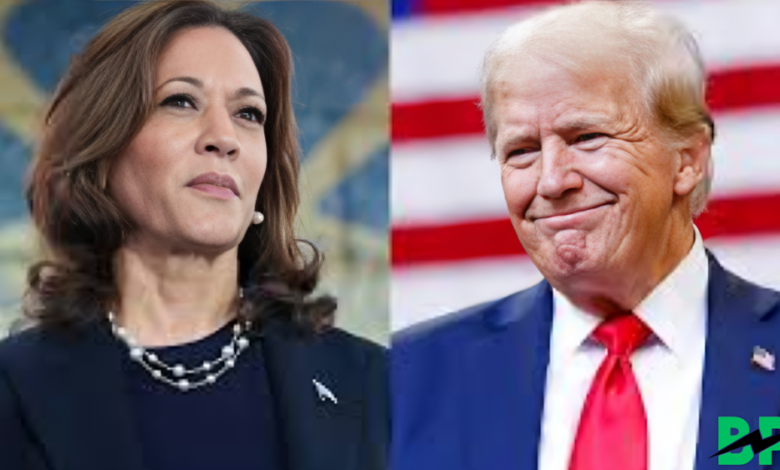Trump vs. Harris: USD Outlook and Opportunities for Investors Leveraging Trading Platforms

Charu Chanana, Head of FX Strategy, Saxo Bank
A potential Trump victory is anticipated to bring increased fiscal spending, pro-growth policies, and heightened risks of trade tensions and geopolitical uncertainty. These dynamics could provide a cyclical boost to the U.S. dollar (USD) in the short term, offering investors in the UAE opportunities to capitalise on these shifts through some of the best online trading platforms.
On the fiscal side, Trump’s agenda of higher government spending and tax cuts is expected to bolster the USD by reinforcing the narrative of U.S. economic strength. These policies could also reduce the need for aggressive Federal Reserve rate cuts, as recession risks may diminish and inflationary pressures re-emerge. Trump’s renewed focus on tariffs and protectionist policies would likely support the USD, particularly against the Chinese yuan (CNH) and emerging market currencies. Major commodity-exporting currencies like the Australian dollar (AUD) and New Zealand dollar (NZD) could face challenges under stricter trade measures. In contrast, the Canadian dollar (CAD) may fare better due to its lower exposure to tariff risks. Investors looking to navigate these changes find value in exploring the best online trading platforms.
Geopolitical factors will also play a key role. A less supportive stance on Ukraine could increase risk aversion, increasing demand for safe-haven assets such as the USD, Japanese yen (JPY), and gold. Meanwhile, European currencies could face downward pressure if tariff threats intensify or geopolitical risks worsen. The Mexican Peso (MXN), heavily reliant on U.S. exports, is particularly vulnerable to potential universal tariffs and stricter immigration policies.
While the immediate outlook for the USD under a Trump presidency appears favourable, the long-term structural view is more cautious. Rising U.S. debt and potential challenges to the Federal Reserve’s independence could weigh on the USD over time. Furthermore, Trump’s aggressive tariff policies and deteriorating international relations may accelerate global efforts to reduce reliance on the dollar as the world’s reserve currency, amplifying risks of long-term structural weakness.
Harris’s Presidency Could Shift the Fed’s Economic Policy
In contrast, a Harris administration would likely prioritise fiscal restraint, with tax hikes playing a central role in its economic strategy. This shift could prompt a more accommodative stance from the Federal Reserve, increasing the likelihood of deeper interest rate cuts. The combination of tighter fiscal and looser monetary policies may weigh the USD in the short term. However, the odds of Harris securing complete control of Congress are low, making a divided government more likely. Such a scenario could result in political gridlock, limiting significant fiscal initiatives and increasing market volatility. This environment could drive demand for safe-haven assets like the USD, Japanese yen (JPY), and Swiss franc (CHF), particularly if concerns about stimulus measures and a possible 2025 recession persist.
A Harris victory could also ease fears of further deterioration in trade relations, which might boost the Chinese yuan (CNH) and other emerging market currencies, potentially weakening the USD in a risk-on environment. However, China’s domestic economic challenges may limit CNH gains. Likewise, commodity-exporting nations such as Australia and New Zealand could see their currencies rally as the risks of worsening global trade relations diminish. That said, the medium-term performance of these currencies will largely depend on whether the global economy achieves a soft landing or faces a deeper recession.
Fed Policy and Yen Carry Trade Reversal Risks
With the Federal Reserve initiating its rate-cutting cycle, downside pressure on the USD has increased. According to the “Dollar Smile” theory, a soft landing for the U.S. economy could lead to a softer USD, but this also depends on the relative strength of other major economies. However, the risks of a hard landing in Germany and Canada, alongside China’s slower growth, complicate the outlook. This suggests that while USD volatility could increase due to further Fed rate cuts in Q4, a prolonged sell-off remains unlikely. Investors should also monitor currency pairs like EUR/GBP (downside) and AUD/CAD (upside) for opportunities driven by economic and policy divergences.
Meanwhile, the Bank of Japan (BOJ) has signalled the potential for future rate hikes, narrowing the yield differential between the U.S. and Japan. This has triggered a reversal in the dollar-yen carry trade, with the USD/JPY pair retreating from summer highs. As we approach the end of 2024, further unwinding these carry trade positions could support additional yen strength. However, this movement may slow if the Fed struggles to meet market expectations for dovish policies, particularly if a swift U.S. recession fails to materialise. The BOJ’s cautious approach and the reduced price pressures from the yen’s recent gains could also temper further yen appreciation. Nonetheless, the case for yen strength remains robust, driven by its safe-haven appeal and the narrowing yield gap with the U.S. Even so, the Fed and BOJ are expected to proceed gradually, keeping the yen gains modest.




